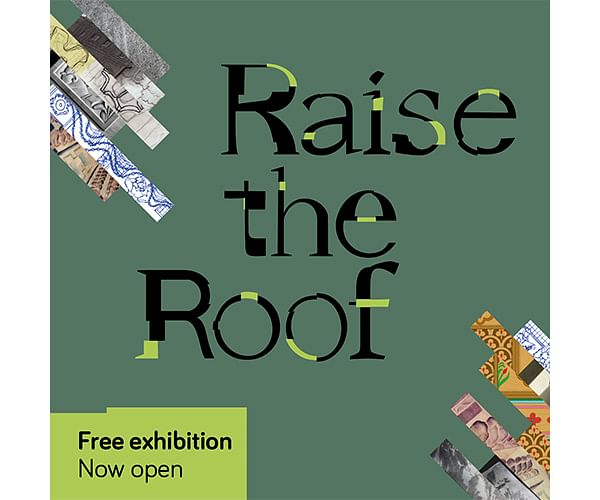Raise the Roof: Building for Change
Event Date: Apr 27, 2024 - Sep 21, 2024; Event City: London, GB Our latest exhibition explores the narratives and attitudes embedded within the fabric of RIBA’s headquarters at 66 Portland Place, London, unpacking themes such as gender, race and imperialism through a series of new and exciting creative works. Opened in 1934, when the modern architectural profession was being forged, RIBA’s Grade II* listed home can tell us a lot about the values and beliefs of architects in that period, and of wider society. In this exhibition, a variety of new artistic interventions interrogate and respond to the complex narratives within specific interior features of 66 Portland Place – the Jarvis Mural and Florence Hall Dominion Screen. You’re invited to help uncover the building’s complicated history and share your hopes for the future of architecture and the profession.Commissions include: Esi Eshun’s multidisciplinary response integrates sound and the overlay of archival imagery to tell the narratives behind specific features within the Jarvis Mural. Her interests lie in the history and placement of some of the buildings and their constructs of power, both in relationship and in contrast to the figurative depictions of indigenous characters. Thandi Loewenson’s piece Blacklight unearths stories of extraction, exploitation and racialisation, themes that underlie the visible layers of the Jarvis Mural and the world they supported to build. Architectural designer Arinjoy Sen’s response to the Jarvis Mural, The Carnival of Portland Place, draws on the theatrical nature of the existing screen to reveal the inner mechanisms not only of the screen itself, but also the colonial traces that the mural references. Giles Tettey Nartey’s unique piece of furniture Assembly directly responds to the Florence Hall Dominion Screen. His work invites visitors to think more broadly about the motifs used to describe and represent culture and architecture. Raise the Roof: Building for Change has been designed by MSOMA Architects in collaboration with graphic design studio Plan B.Read the full post on Bustler

Our latest exhibition explores the narratives and attitudes embedded within the fabric of RIBA’s headquarters at 66 Portland Place, London, unpacking themes such as gender, race and imperialism through a series of new and exciting creative works.
Opened in 1934, when the modern architectural profession was being forged, RIBA’s Grade II* listed home can tell us a lot about the values and beliefs of architects in that period, and of wider society.
In this exhibition, a variety of new artistic interventions interrogate and respond to the complex narratives within specific interior features of 66 Portland Place – the Jarvis Mural and Florence Hall Dominion Screen.
You’re invited to help uncover the building’s complicated history and share your hopes for the future of architecture and the profession.
Commissions include:
Esi Eshun’s multidisciplinary response integrates sound and the overlay of archival imagery to tell the narratives behind specific features within the Jarvis Mural. Her interests lie in the history and placement of some of the buildings and their constructs of power, both in relationship and in contrast to the figurative depictions of indigenous characters.
Thandi Loewenson’s piece Blacklight unearths stories of extraction, exploitation and racialisation, themes that underlie the visible layers of the Jarvis Mural and the world they supported to build.
Architectural designer Arinjoy Sen’s response to the Jarvis Mural, The Carnival of Portland Place, draws on the theatrical nature of the existing screen to reveal the inner mechanisms not only of the screen itself, but also the colonial traces that the mural references.
Giles Tettey Nartey’s unique piece of furniture Assembly directly responds to the Florence Hall Dominion Screen. His work invites visitors to think more broadly about the motifs used to describe and represent culture and architecture.
Raise the Roof: Building for Change has been designed by MSOMA Architects in collaboration with graphic design studio Plan B.Read the full post on Bustler
